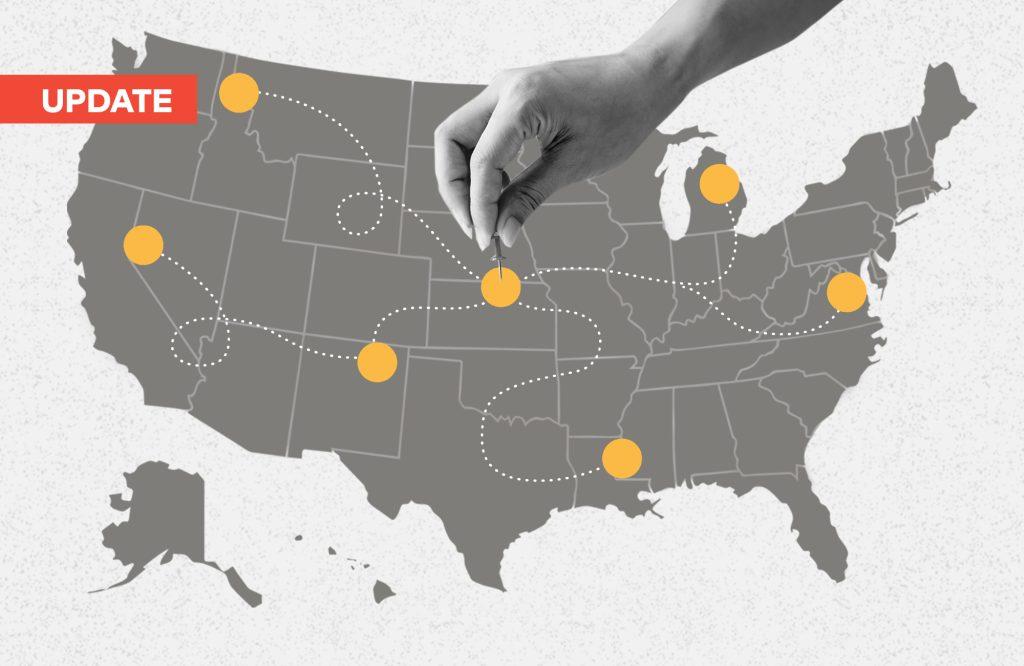A workforce crisis has beset state and local governments throughout the U.S. for quite some time – and it’s only gotten worse in the wake of COVID-19. Between stress, burnout, retirement, and a difficult transition to remote-work arrangements, employees have been leaving government offices in droves. From December 2021 to February 2022, the job opening rate in state and local government agencies hit its highest mark in over 20 years.
In this period, the highest numbers of new vacancies were usually found in public-facing occupations. Hard-to-fill positions have also taken a hit, such as those of computer technicians and data scientists, in part because of the high education requirements associated with these jobs and their relatively meager compensation compared to private sector roles of the same type. And when the public sector workforce struggles, so does the public.
Take, for example, the years-long clean-water crisis in Jackson, Mississippi, during which residents have gone for stretches of weeks without access to potable water. Though many factors have contributed to the crisis – not the least of which involve conflicts between a conservative state government and the liberal-majority populace of Jackson – the inability of the city to hire enough Class A water operators to run water treatment plants has played a critical role in its failure to provide drinkable water to its people.
An inability to hire and retain talent has left state and local governments unable to meet certain needs of the citizens they serve as the U.S. continues to recover from the pandemic. Workers are leaving, and others are not coming in to take their place. And with state and local governments playing such a large role in the employment of women and workers of color, the crisis can have a disproportionate impact on these segments of the population.
What are the roadblocks to progress?
At least one obstacle to the development of the public sector workforce is unavoidable – the ongoing mass retirement of aging workers hired decades ago. The baby boomer retirement crisis has posed issues in both the private and public sectors, but the public sector faces a unique struggle filling the void retirees are leaving behind.
According to Mark F. Weinberg, president of the Careers in Government (CiG) planning board, “local and state government will have to increase their recruitment efforts to fill vacated procurement positions for the balance of this decade.” Weinberg said competition for new talent will only grow stronger as time goes on, and recruitment efforts will require a more technology-based approach aimed at younger recruits.
Lengthy hiring processes, inflexible work arrangements, and noncompetitive salaries can create additional obstacles for state and local governments looking to hire and develop talent. A lack of community outreach can also hinder these agencies. One vicious cycle plaguing the workforce crisis stems from the fact that many state and local employers are inadequately equipped to hire the HR staff necessary to evaluate and fine-tune their hiring processes.
Addressing the workforce crisis
So, what is to be done about the public sector workforce issue? At the very least, most research points toward better funding for take-home pay as the most surefire solution. When we think about take-home pay, we usually think about salary, but hazard pay as well as recruitment and retention bonuses can also go a long way in making sure workers are incentivized to come aboard and stay aboard.
It can therefore be argued that any push to boost numbers in government offices must necessarily have a political component. Without proper financial support from state and local governments, public sector organizations cannot offer the attractive take-home pay rates or launch the community engagement initiatives that will keep recruits from simply taking better offers in the private sector.
Reviewing education and experience requirements can also help state and local agencies address their workforce needs. For example, by replacing hard-and-fast degree requirements with apprenticeships and internships, government offices can pique the interest of potential employees and develop their talent in hands-on positions. Considering the U.S.’s education gap between white and nonwhite citizens, this could also help to address discrepancies in hiring workers from marginalized groups.
Increased community outreach and collaboration with educational institutions offer another avenue toward workforce growth. By partnering with community-based workforce development programs, HR departments in government offices can make the availability of public sector jobs better known and create viable networks for attracting and retaining talent that would otherwise go to the private sector. But how does this look in practice?
Case study: The Metropolitan Water District of Southern California
A worthy example of community outreach done right can be found in the efforts of the Metropolitan Water District of Southern California’s Engineering Services Group. In 2018, Engineering Services developed a workforce planning program intended to boost outreach and improve worker retention across the board. The group adopted an intern program and increased its collaboration with universities in the region to develop more diverse talent pools for entry-level positions.
The group also retooled its recruitment strategy. In the past, Engineering Services had targeted technically proficient hires who would quickly ascend the office ranks to assume high-level technical or management positions. But in its new approach, the agency looked for other skills in potential recruits, including communication skills, leadership attributes, and the ability to adapt, in an effort to attract more well-rounded applicants.
Engineering Services also benefitted from a streamlined, standardized onboarding process, in which the office’s guiding principles were reinforced not only in training modules but also in team meetings, one-on-one conversations, and performance evaluations. Literature on the office’s mission statement and guiding principles was made widely accessible, which helped instill a strong culture throughout the organization’s workforce.
The agency also benefited from formalized rotations to engage workers with department functions outside the scope of their positions, mentoring programs to rejuvenate mid-career staff and increase enthusiasm for taking on new roles within the organization, and management training to generate interest in higher-level positions. These strategies all helped strengthen the workforce within Engineering Services, from entry-level positions all the way to upper management.
The hope for recovery
Initiatives like those in Southern California are taking place across the country. For example, Next Gen Silicon Valley, a commission of local government agencies that creates annual programs to raise awareness of public sector positions and opportunities for advancement within them, offers internship and fellowship programs as part of its overall community outreach initiative.
This is all to say that though the public sector workforce struggles, there is still hope for recovery. If legislators act to provide better funding for government agencies, and if these agencies launch strong recruitment initiatives to reach out to communities and provide employee benefits that prevent migration to the private sector, meaningful progress can be made toward rebuilding the government workforce in the coming years.
In future articles, we will discuss workforce planning with a wider scope, looking at the labor shortage as it applies to regulated professions, such as those in health care (doctors, nurses, etc.), and the role of regulation in the planning and management of these workforces. We will also take a closer look at the IT and cybersecurity workforce, exploring the unique challenges the public sector faces in such a critical and ever-changing field.
MORE VOICES ARTICLES

Trust on trial: Navigating the murky waters of scientific integrity
As fraudulent research papers flood academic journals, the sanctity of scientific discovery is under siege, challenging the very foundation of trust we place in peer-reviewed publications. With AI now both a tool for creating and detecting such deceptions, the urgency for a robust, independent regulatory framework in scientific publishing has never been greater.

Do regulators deserve deference?
In a pivotal moment for regulatory law, the U.S. Supreme Court’s review of the Chevron doctrine could redefine the bounds of deference courts give to regulatory agencies, potentially inviting more challenges to their authority. This critical examination strikes at the heart of longstanding legal principles, signaling a significant shift in the landscape of regulatory oversight and its interpretation by the judiciary.

From Frankenstein to Siri: Accountability in the era of automation
As AI advances in sectors from health care to engineering, who will be held accountable if it causes harm? And as human decision-makers are replaced by algorithms in more situations, what will happen to uniquely human variables like empathy and compassion? Harry Cayton explores these questions in his latest article.

Regulating joy: The risky business of festivities
In his final Voices article of 2023, Harry Cayton reflects on our enthusiasm for participating in cultural festivities that often cause injuries or even deaths, which has led some governments to attempt to regulate these risky celebrations.

Building my regulator of tomorrow with LEGO® bricks
What should the regulator of tomorrow look like? While there may be no definitive vision, contributor Rick Borges gets creative with answering this important question, drawing inspiration from a favorite toy to ‘build’ a model of an effective future regulator.

‘Thin’ and ‘thick’ rules of regulation: Cayton reviews Daston’s history of what we live by
Lorraine Daston explores fascinating examples of rulemaking throughout history in her new book, ‘Rules: A Short History of What We Live By.’ In this article, Harry Cayton discusses what regulators can learn from Daston’s work.








